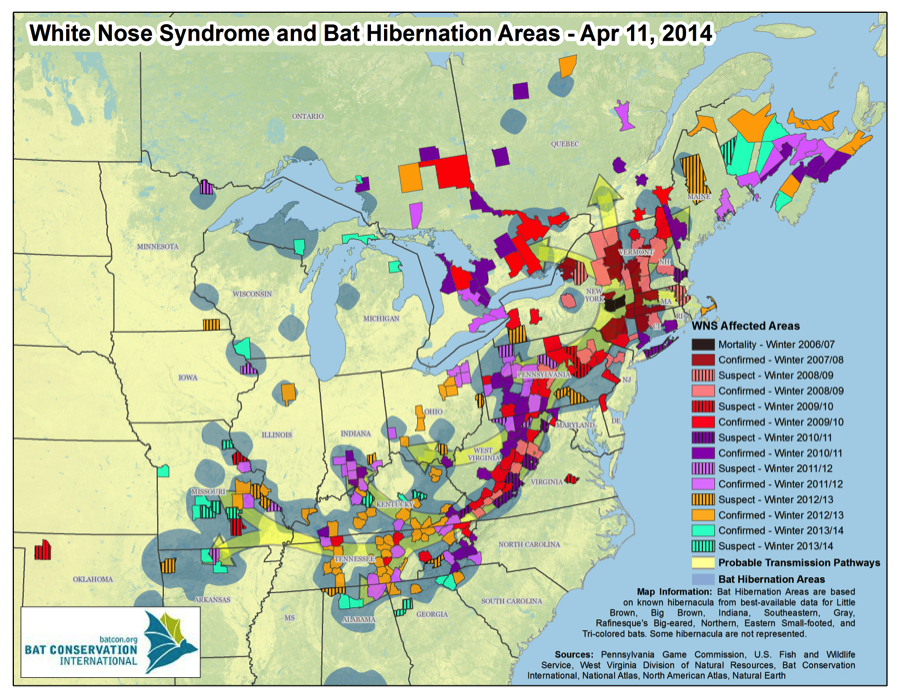On the east coast, there are two main species of bats: the little brown bats (Myotis lucifugus) and the big brown bats (Eptesicus fuscus). These two species of bats can either migrate or hibernate during colder seasons and live basically anywhere they can dwell like caves, trees, and man-made structures. The little browns and big browns do not have an area specific location, however, these bats usually tend to stick around their birthplaces and their usual hibernation sites. As to how they know where these specific locations are still continue to be a mystery. To get around, these bats use their high frequency sounds to travel and sense their location since they cannot detect color due to their nocturnal habits.
However, since 2006, the brown bats have been dying off by the millions from a disease called the white nose syndrome (WNS). Currently, WNS has killed over 5.7 million bats in the United States. White Nose syndrome is a white fungus formerly known as Geomyces sp., and is now known as Pseudogymnoascus destructans, or Pd., and grows on the noses and hairless parts of the bats. This fungus is particularly suited for colder weather, which forces the bats to come out of hibernation and into the wild. Because the bats are about and flying around during the winter/colder weathers, the bats become sick and eventually die due to this devastating habit. It was first spotted in the New York region and has started to migrate down south and around the original location.

Efforts to stop this disease
As the bat group, we are hoping to house bats and study them in our very own bat house. Currently there are no signs of the white nose syndrome in Charlottesville but we can learn more about the disease in our locations by using the bat house. Constructing bat houses supports the effort to control the disease by minimizing the disturbance to our homes and it takes cares of the bats by providing them with a place to live in. Another way to stop the spread of the disease is to avoid the hibernating bats during the winter in their natural habitat. If you want to learn more about the white nose syndrome or bat conservation in general, visit: http://www.whitenosesyndrome.org or http://www.batcon.org/.
Bibliography:
“Bats – Bat Removal, Exclusion and Guano Clean up in Richmond and Charlottesville, Virginia.” Bats – Bat Removal, Exclusion and Guano Clean up in Richmond and Charlottesville, Virginia. N.p., n.d. Web. 18 Apr. 2014.
“The Facts About Bats in New Jersey.” (from Rutgers NJAES). N.p., n.d. Web. 18 Apr. 2014.
“Hinterland Who’s Who – Bats.” Hinterland Who’s Who – Bats. N.p., n.d. Web. 18 Apr. 2014.
“Over 5.7 Million Bats Have Died.” Bat Conservation International, Inc. N.p., n.d. Web. 18 Apr. 2014.
“White-Nose Syndrome.” WNS Information Resources. N.p., n.d. Web. 18 Apr. 2014.
Post by Joshua Aries Cruz